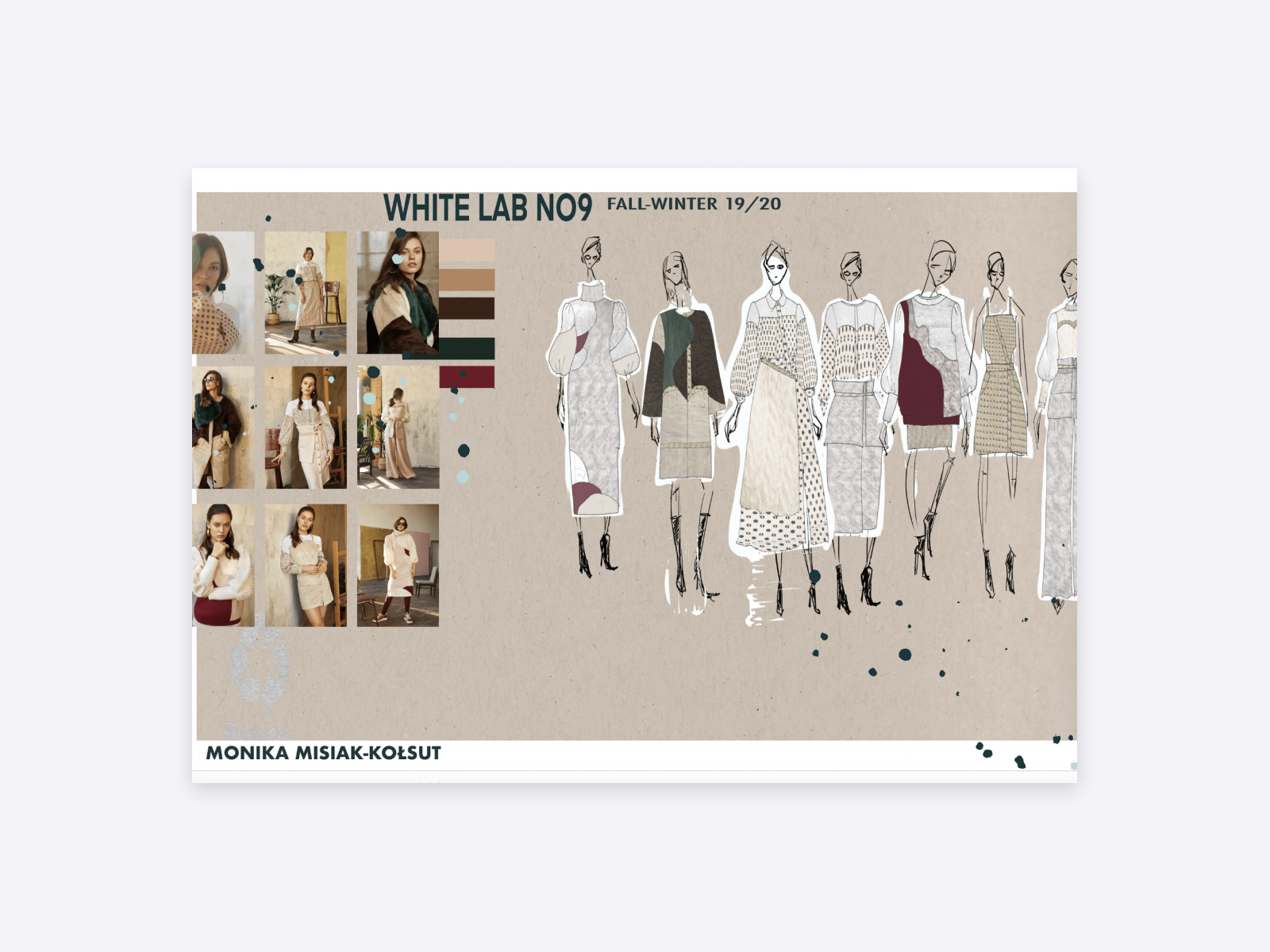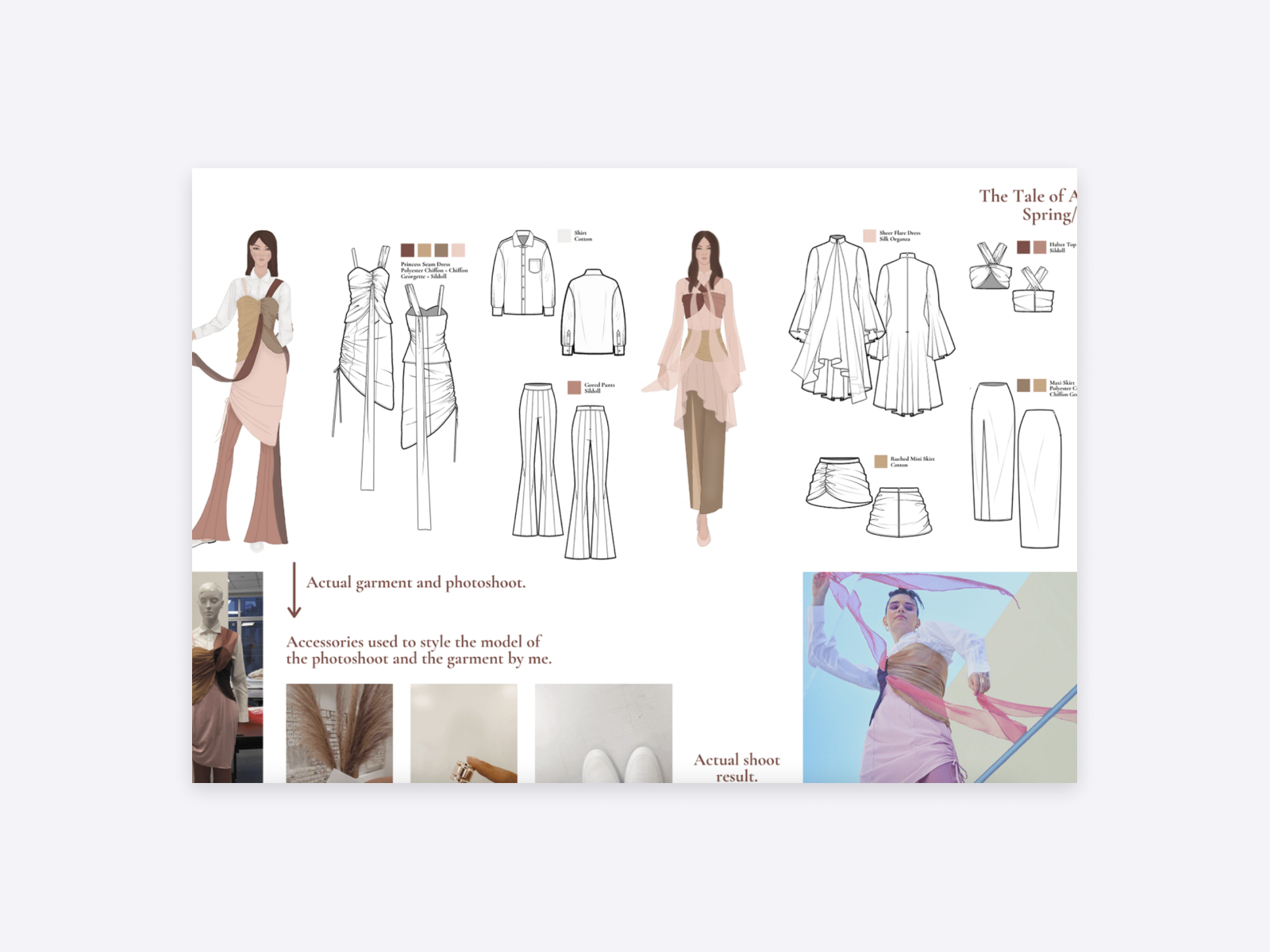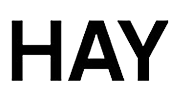Blog
Fashion Design Portfolio Examples: Inspire Your Creative Journey

Creating a fashion design portfolio is essential for aspiring designers. It showcases your skills and creativity to potential employers or clients.
A well-crafted portfolio can make a lasting impression. It serves as a visual resume, highlighting your best work and unique style. In this blog post, we’ll explore inspiring fashion design portfolio examples. These examples will help you understand what to include and how to present your work effectively.
Whether you’re a student or a professional, a strong portfolio can open doors to exciting opportunities. So, let’s dive into these examples and discover how to make your portfolio stand out in the competitive world of fashion design.

Credit: beyondtalentrecruitment.com
Introduction To Fashion Design Portfolios
Creating a compelling fashion design portfolio is essential for any aspiring designer. This portfolio showcases your creativity and skills. It represents your unique style and vision. It can also open doors to opportunities in the fashion industry.
Importance Of A Strong Portfolio
A strong fashion design portfolio is your first impression. It speaks volumes about your talent. It can attract potential employers or clients. A well-crafted portfolio highlights your best work. It can set you apart from the competition.
Key Elements To Include
Include a variety of your best designs. Show different styles and techniques. Make sure your portfolio is organized. Use clear labels and categories. High-quality images are crucial. They should represent your work accurately. Include sketches, finished products, and fabric swatches. This gives a complete view of your process.
Write brief descriptions for each piece. Explain your inspiration and materials used. This adds depth to your portfolio. It helps viewers understand your creative process. Include a personal statement. Share your vision and goals. This makes your portfolio more personal and engaging.
Showcasing Your Unique Style
Creating a fashion design portfolio is more than just displaying your work. It’s about telling your personal story through your designs. Your portfolio should highlight your unique style and set you apart from other designers. By focusing on your signature aesthetic and personal strengths, you can create a portfolio that truly represents who you are as a designer.
Choosing A Signature Aesthetic
Your signature aesthetic is the cornerstone of your portfolio. This is what makes your work recognizable and memorable. Think about the elements that define your style. Is it the use of bold colors? Unique patterns? A minimalist approach?
Consider these aspects:
- Color palette
- Fabric choices
- Silhouette and structure
- Inspiration sources
These elements will help you create a cohesive portfolio. Ensure each design reflects your aesthetic. Consistency is key. It shows you have a clear vision and identity.
Highlighting Personal Strengths
Every designer has their own set of strengths. These could be technical skills, creativity, or unique design approaches. Highlight these in your portfolio to show what makes you special.
Consider including:
- Detailed sketches and illustrations
- High-quality photographs of finished garments
- Technical drawings and patterns
- Process work that shows your design journey
By showcasing these elements, you give viewers insight into your design process and skills. This not only makes your portfolio more engaging but also shows your expertise and dedication.
Creating A Cohesive Collection
Creating a cohesive collection is vital for a fashion design portfolio. It shows your ability to design a series of pieces that work together. A harmonious collection reflects your vision and creativity. It also demonstrates your understanding of design principles.
A cohesive collection tells a story. It should have a clear theme and consistent elements. This section will guide you through the steps to achieve this. Let’s start with concept development and move on to color and fabric coordination.
Concept Development
Concept development is the foundation of a cohesive collection. Start with a central idea or theme. This could be inspired by anything: nature, history, or even a feeling. The theme should be clear and well-defined.
Once you have your theme, create mood boards. These include images, colors, and textures that represent your idea. Mood boards help visualize and refine your concept. They keep your inspiration focused and consistent.
Sketch your ideas next. Develop a series of designs that fit your theme. Ensure each design relates to the others. This creates harmony and unity in your collection.
Color And Fabric Coordination
Color and fabric coordination is crucial for a cohesive collection. Choose a color palette that reflects your theme. Stick to a limited range of colors. This keeps the collection visually unified.
Select fabrics that complement your color choices. Consider texture, weight, and drape. The right fabrics enhance your designs and make them feel coherent.
Create fabric swatches and color samples. This helps you see how they work together. Adjust as needed to maintain harmony. Consistent color and fabric choices tie your collection together seamlessly.
Incorporating Sketches And Illustrations
In fashion design, sketches and illustrations are essential. They bring your ideas to life. Including these in your portfolio can make it stand out. Both hand-drawn and digital sketches have their own charm. The key is in the presentation.
Hand-drawn Vs. Digital Sketches
Hand-drawn sketches are traditional. They show your raw talent and creativity. Using pencils, pens, or markers, you can create unique designs. These sketches often have a personal touch. They reflect your unique style.
Digital sketches are modern. They show your tech skills. Using software like Adobe Illustrator or Photoshop, you can create detailed designs. These sketches often look polished and professional. They are easy to edit and share.
| Hand-drawn Sketches | Digital Sketches |
|---|---|
| Traditional and personal | Modern and polished |
| Shows raw talent | Shows tech skills |
| Unique style | Easy to edit |
Effective Presentation Techniques
Organize your sketches. Group them by theme or collection. This makes your portfolio easy to navigate. Use headings and subheadings to guide the viewer.
Use high-quality images. Whether hand-drawn or digital, ensure your sketches are clear. Use a scanner for hand-drawn sketches. For digital ones, export them in high resolution.
Include detailed descriptions. Explain your inspiration and process. Describe the materials and techniques used. This adds depth to your designs.
Combine sketches with finished designs. Show the journey from concept to completion. This demonstrates your ability to bring ideas to life.
Keep it clean and professional. Avoid clutter. Use a simple layout. Let your designs be the focus.
- Organize by theme
- Use high-quality images
- Include detailed descriptions
- Combine sketches with finished designs
- Keep it clean and professional
By following these techniques, your portfolio will shine. It will reflect your skills and creativity. Make your sketches and illustrations the star of your portfolio.
Highlighting Technical Skills
Highlighting Technical Skills in a fashion design portfolio is essential. These skills demonstrate your ability to bring designs to life. They show you have the know-how to create beautiful garments. Let’s explore key areas that highlight these skills.
Sewing And Construction Details
Showcasing sewing and construction details is vital. These details reveal your garment’s quality. Use close-up photos of seams and hems. This shows your precision and attention to detail.
Include images of:
- Neat seams
- Even hems
- Secure stitches
Highlight different stitching techniques you use. This can include:
- Topstitching
- Understitching
- Edge stitching
Organize these images in a clear layout. This helps viewers see your technical ability quickly.
Pattern Making And Draping
Pattern making and draping skills are crucial. Include sketches and photos of your pattern making process. Show the steps from concept to final pattern. This gives insight into your design thinking.
Display images of:
- Drafted patterns
- Muslin mock-ups
- Final garments
For draping, share photos of:
- Draped fabric on a dress form
- Pinning and tucking details
- Final draped designs
Use a table to compare your flat patterns and draped designs.
| Flat Pattern | Draped Design |
|---|---|
 |
 |
This comparison shows your skill in transforming 2D patterns into 3D garments. It highlights your ability to work in both flat and draped methods.
Including Fashion Photography
Including fashion photography in your fashion design portfolio is crucial. It showcases your creations in the best light. High-quality images can make your work stand out. They bring your designs to life and attract potential clients or employers.
Professional Vs. Diy Photography
Professional photography offers high-quality images. These photographers have experience and high-end equipment. They know how to capture details and textures. They can also provide consistent results.
DIY photography can be cost-effective. With a good camera and some practice, you can take decent photos. It requires time and effort to learn the basics. Proper lighting and background are essential for good DIY shots.
Styling And Composition Tips
Styling is key in fashion photography. Use accessories to enhance your designs. Ensure the model’s hair and makeup complement the outfit. Consider the overall look and feel you want to portray.
Composition is equally important. Use the rule of thirds to create balanced images. Avoid cluttered backgrounds. Focus on the design elements you want to highlight. Experiment with different angles and poses.
Presenting Completed Garments
Presenting completed garments is an essential part of any fashion design portfolio. This section showcases your hard work and creativity. It is where potential clients and employers see your finished products.
Completed garments tell the story of your design process. They show your ability to bring ideas to life. These pieces are more than just clothing; they are a testament to your skills and vision.
Highlighting your completed garments can be done in various ways. Here are some effective methods:
Runway Show Highlights
Runway shows are a great way to present your designs. They offer a dynamic and engaging showcase. Include high-quality photos from runway shows. Highlight the best moments and key pieces. This gives viewers a sense of your collection’s impact and style.
Editorial And Lookbook Shoots
Editorial shoots capture your garments in a styled setting. These photos show your designs in a real-world context. They highlight the versatility and appeal of your pieces. Lookbook shoots are also important. They provide a comprehensive view of your collection. Include both types of shoots in your portfolio. This gives a well-rounded presentation of your work.

Credit: www.youtube.com
Tips For Portfolio Layout And Design
Creating a compelling fashion design portfolio is crucial for showcasing your work. The layout and design play a significant role. A well-structured portfolio not only highlights your skills but also makes a lasting impression.
Organizing Content Effectively
Organize your content logically. Start with your best work. This grabs attention immediately. Use sections to group similar projects together. This could be by theme, style, or type of garment.
Include these sections in your portfolio:
- Introduction or About Me
- Best Work
- Collections
- Sketches and Illustrations
- Technical Drawings
- Photographs of Finished Garments
- Contact Information
Each section should have a clear heading. This makes it easy to navigate. Use white space effectively. It helps to keep the layout clean. Limit text to short, descriptive paragraphs. This ensures the focus remains on your work.
Choosing The Right Format
Pick a format that suits your style. Options include digital, print, or a combination. Digital portfolios are more versatile. They can be easily shared and updated.
| Format | Advantages | Disadvantages |
|---|---|---|
| Digital | Easy to share, update, and access globally. | Requires internet access, can be less personal. |
| Tangible, personal, can be more impactful. | Harder to update, can be expensive to produce. | |
| Combination | Best of both worlds, versatile. | Can be time-consuming to create. |
Choose high-quality images for your portfolio. They should be well-lit and showcase your designs clearly. Avoid cluttering the pages. Each piece should have enough space to stand out.
Inspiration From Successful Designers
Building a fashion design portfolio can be daunting. Drawing inspiration from successful designers helps. Their portfolios showcase creativity and professionalism. This provides a roadmap for aspiring designers. Below, we explore some notable examples.
Case Studies Of Renowned Portfolios
Let’s look at some famous portfolios. Alexander McQueen’s portfolio is a great example. His work displays a blend of avant-garde and classic styles. Each piece tells a story. The portfolio layout is clean. Images are high quality. Descriptions are concise. This makes his portfolio memorable.
Another example is Stella McCartney. Her portfolio emphasizes sustainability. It features eco-friendly designs. Each project highlights her commitment to the environment. Clear images and detailed descriptions stand out. This approach attracts eco-conscious clients.
Learning From Industry Leaders
Industry leaders set trends. Their portfolios provide valuable lessons. Take the case of Diane von Furstenberg. Her portfolio is vibrant. It reflects her iconic wrap dresses. Each design exudes elegance. The layout is user-friendly. This enhances the viewing experience.
Tom Ford’s portfolio is another example. It is sleek and sophisticated. His work showcases luxury. Each piece is meticulously crafted. The portfolio design is minimalistic. This aligns with his brand image. Studying such portfolios helps refine your own.
In summary, observing successful designers’ portfolios offers inspiration. They serve as benchmarks. This helps in crafting a compelling fashion design portfolio.

Credit: folioeditor.com
Final Thoughts And Next Steps
Creating a fashion design portfolio is just the beginning. You want it to stand out and leave a lasting impression. After finishing your portfolio, there are some important steps to take. These steps will help you improve and keep your work relevant.
Seeking Feedback
Show your portfolio to mentors, peers, and industry professionals. Their feedback is valuable. It can help you see your work from different perspectives. Don’t take criticism personally. Use it to make your portfolio better.
- Ask for specific feedback on your designs.
- Take notes on suggestions and ideas.
- Consider both positive and negative comments.
Continuous Improvement And Updates
Fashion trends change quickly. Keep your portfolio updated with new designs and projects. This shows that you are active and current in the industry.
Here are some tips for continuous improvement:
- Set regular intervals to review and update your portfolio.
- Replace old designs with new, innovative ones.
- Include recent projects and collaborations.
Stay committed to improving your portfolio. This dedication will reflect your passion and professionalism in the fashion industry.
Frequently Asked Questions
What Should A Fashion Design Portfolio Include?
A fashion design portfolio should include sketches, technical drawings, fabric swatches, and finished garments. Highlight your best work and creativity. Include a variety of styles to showcase your versatility.
How Do I Make A Fashion Portfolio?
Create a fashion portfolio by organizing your best work. Include sketches, photos of finished garments, and mood boards. Keep it professional and visually appealing. Use high-quality images.
Why Is A Fashion Portfolio Important?
A fashion portfolio is important because it showcases your skills and creativity. It helps potential employers or clients assess your work. It’s a visual resume that highlights your design abilities.
How Many Pieces Should Be In A Portfolio?
Include 10-15 pieces in your portfolio. Quality is more important than quantity. Showcase your best and most recent work. Ensure it reflects your range and skills.
Conclusion
Creating a fashion design portfolio takes time and creativity. Each example showcases unique styles and skills. Use these portfolios for inspiration. Aim to reflect your personal touch. Keep your designs fresh and innovative. A well-crafted portfolio can open doors. It helps you stand out to potential employers.
Always update your work to show growth. Fashion is an ever-evolving field. Stay current with trends. Your portfolio is your visual resume. Make it impactful and memorable.









